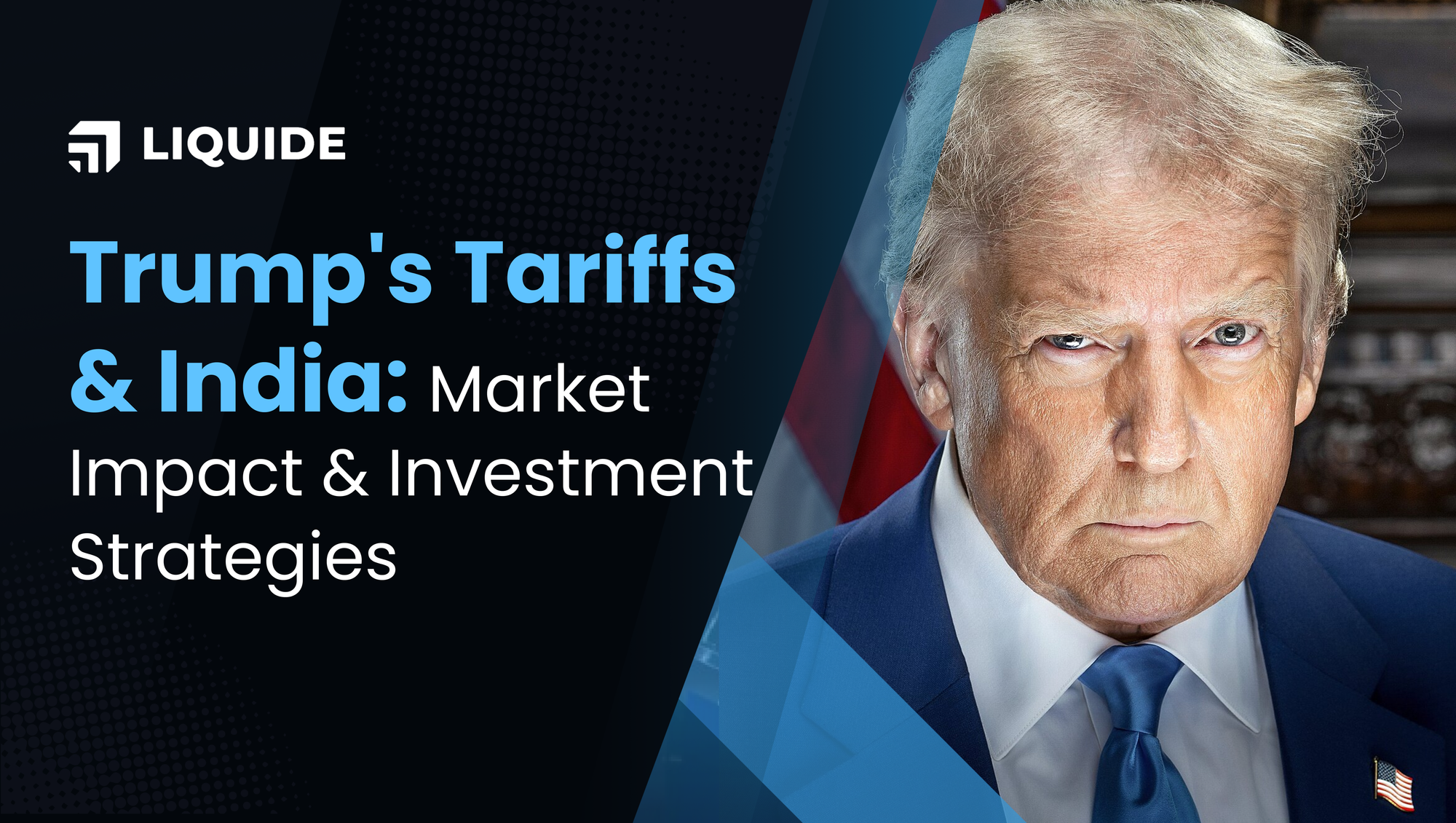Budgeting for a Trade War: How Trump’s Tariffs Impact India
Trump’s renewed trade war is shaking global markets. Discover how his tariffs on China, Mexico, and Canada impact India’s stock market, sectors, and how investors can adapt.

The Indian stock market staged a pre-budget rally last week, bouncing back nearly 2% from Monday’s slump. But despite the finance minister’s big announcement—an income tax exemption of up to Rs 12 lakh per annum—investors remained cautious on budget day. The muted reaction suggests markets are holding back, waiting for clarity on capital gains taxation, which could be addressed in the upcoming tax bill.
Adding to the uncertainty, markets opened with a sharp gap-down on Monday, February 3rd. By the close, the Nifty slipped 121.10 points to 23,361.05, while the Sensex dropped 319.22 points to 77,186.74. Let’s examine the factors behind this drop.
Trump's Trade War 2.0: Tariffs on Mexico, Canada & China
Barely two weeks into his second term, President Trump has reignited trade tensions with fresh tariffs: 25% on imports from Mexico and Canada, and 10% on Chinese goods. This move, combined with the Federal Reserve’s decision to hold interest rates steady, has made the global investment landscape even trickier.
The Big Question: How Will Trump's Tariffs Affect India?
For India, this trade war is a mixed bag. The direct hit from Canada and Mexico’s tariffs is minimal, but the China factor is where things get interesting. With US-China tensions flaring up again, India stands to gain as companies double down on the ‘China Plus One’ strategy, shifting more manufacturing to India. This could be a big boost for Indian exports and the manufacturing sector.
But here’s the flip side. Oil prices shot up after Trump’s tariff announcement, which means India’s import bill could swell. On top of that, Indian markets have been on a downward trend since September 2024, and these tariffs could add more pressure.
Why? If inflation spikes in the US, treasury yields could rise, making the dollar stronger—bad news for emerging markets like India, as foreign investors may start pulling out their money in search of better returns.
Meanwhile, China has taken the fight to the World Trade Organization (WTO), but that’s a long road. In the meantime, India could benefit from the shifting global trade landscape—unless, of course, Trump turns his tariff gun toward Indian exports. The US does have a trade deficit with India, after all. With two-way trade crossing $118 billion in 2023-24 and India holding a $32 billion surplus, it’s a possibility India can’t ignore.
So, while India has a shot at turning this into an opportunity, it also needs to buckle up for some bumps along the way.
Currency Volatility: What It Means for India
With Trump’s policies fuelling market uncertainty, the US dollar has strengthened significantly. Since September, the dollar index has risen from 100 to 110, while the Indian rupee has depreciated from 83.8 to 87. This could increase India’s import costs, leading to inflationary pressures, but also make Indian exports more competitive.
Final Thoughts
While India has dodged immediate tariff hikes, it remains on Trump’s radar. The US-India trade relationship is heavily influenced by geopolitics, and India’s role as a counterbalance to China works in its favour. However, its ability to capitalize on shifting global trade dynamics will depend on how the US navigates its protectionist policies alongside strategic priorities.
As markets digest the implications of India’s Budget and Trump’s aggressive tariff stance, volatility is here to stay. Investors should expect some turbulence ahead but stay focused on long-term value creation in this evolving landscape.
Investment Strategy: How to Navigate This Market
- Diversify Smartly: Reduce risk by spreading investments across sectors and asset classes. Explore Liquide Baskets for a balanced approach.
- Look for Export-Oriented Plays: With a weaker rupee, export-driven businesses—such as IT, Pharma, and Auto parts—stand to gain.
- Focus on Value Stocks: In a volatile market, fundamentally strong companies with steady earnings, reasonable valuations, and low debt remain safer bets.
Discover Investment Opportunities with Liquide
Maximize your investment potential with Liquide, featuring pioneering tools like LiMo, an AI co-pilot for stock investing. Available on both Google Play Store and Apple Appstore, Liquide offers up-to-date market analysis, expert recommendations, and real-time insights to guide your investment decisions. Download the Liquide App today and elevate your financial journey with Liquide's cutting-edge features.

